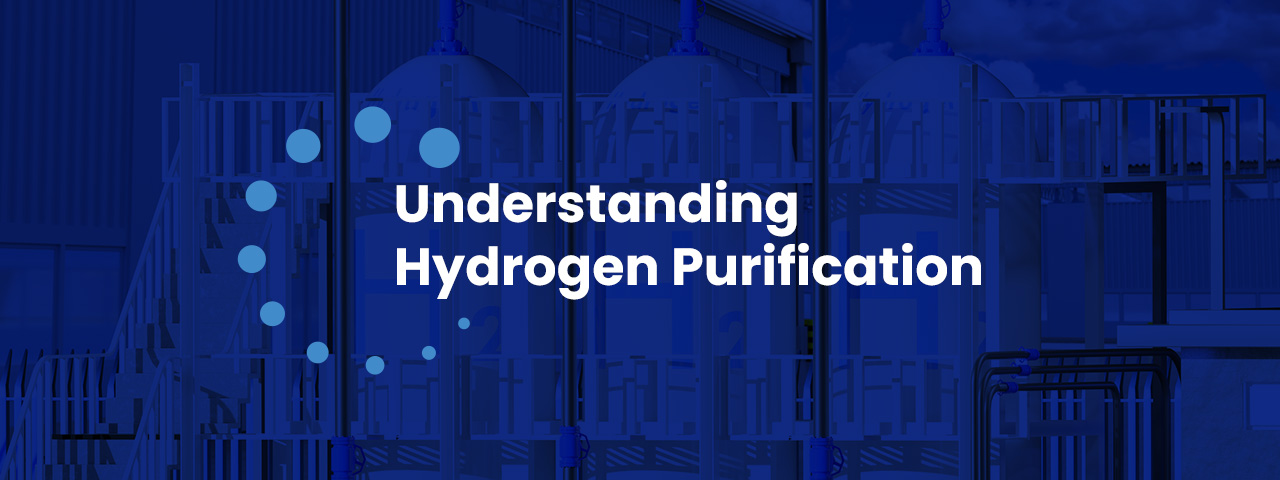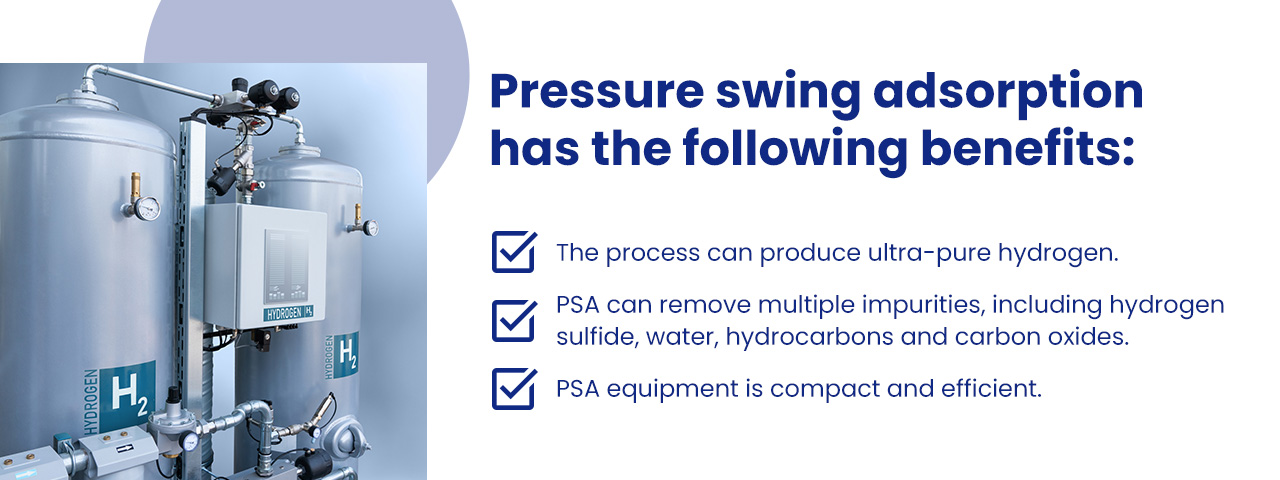March 3, 2025
Understanding Hydrogen Purification

Multiple applications require hydrogen gas to be as pure as possible, including power generation, fuel-cell vehicles and various industrial processes. Purifying hydrogen removes contaminants like water vapor, carbon monoxide, carbon dioxide, nitrogen, methane and sulfur compounds.
Hydrogen purification methods include pressure swing adsorption, gas membrane separation, cryogenic distillation, chemical absorption and electrochemical separation. Using appropriate filters or filtration techniques throughout the process is vital for quality and efficiency. This brief guide to hydrogen purification explores the benefits of different methods and how hydrogen filters work.
What Is Hydrogen Purification?
Traditional methods used to generate hydrogen are energy-intensive and rely on fossil fuels like methane, thus producing contaminants. Unrefined hydrogen is also a by-product of other chemical and industrial processes.
Applications like clean transportation fuel require purified hydrogen. The gas’ quality affects the efficiency and performance of fuel cells. Pure hydrogen is critical in industrial applications like petroleum refining and ammonia production. It is also significant for the following purposes:
- Creating ultra-clean environments for semiconductor manufacturing
- Synthesizing pharmaceutical ingredients
- Manufacturing electronics, including solar cells
- As a shielding gas in welding
- As a propellant in rocket engines
How Does Hydrogen Purification Work?
Hydrogen purification works differently depending on the unique method used, but all techniques require a filter to remove contaminants.
- Mechanical: Mechanical filters are ideal for removing particulate matter and liquid contaminants, like water vapor, from hydrogen gas. These filters are often porous materials that trap large particulates while allowing hydrogen to pass through.
- Activated carbon: Activated carbon is an adsorbent. Unwanted gases like carbon monoxide will adhere to it while hydrogen passes through.
- Membrane: Membranes filter gases according to their molecular sizes.
- Chemical: These filters interact chemically with impurities to remove them from the gas mix.
Select hydrogen purification filters based on the impurities you must remove. Understanding properties like flow rate, solubility, ionic charge and chemical makeup can help you determine the most appropriate filter and purification method.
There are also numerous hydrogen purification methods, each with unique benefits and applications.
Pressure Swing Adsorption
Pressure swing adsorption separates specific gases from a mixture under high-pressure conditions by trapping them onto a solid surface. Adsorbent materials for PSA systems discriminate between gases based on their molecular makeup and affinity for adsorbents.
Typical adsorbent materials include zeolites, activated carbon, aluminum, silica gel and synthetic resins. PSA technology removes carbon dioxide from commercially synthesized hydrogen, usually used to produce ammonia and in oil refineries. PSA systems can also remove hydrogen sulfide from hydrogen feeds.
Pressure swing adsorption has the following benefits:
- The process can produce ultra-pure hydrogen.
- PSA can remove multiple impurities, including hydrogen sulfide, water, hydrocarbons and carbon oxides.
- PSA equipment is compact and efficient.
Gas Membrane Separation
Gas separation membranes are thin barriers made from materials like polymers that block some gases and allow others to permeate. This separation is possible due to the gases’ different chemical and physical properties, including solubility and diffusion rates. The process also relies on pressure differences across the membranes to drive gas flow.
Zeolite membranes can separate hydrogen from hydrocarbons — the membrane’s pores are larger than hydrogen molecules but smaller than hydrocarbons. Membrane techniques also separate hydrogen from nitrogen and methane and recover hydrogen from ammonia plants and oil refineries.
Gas separation membrane methods are eco-friendly, safe to use, compact and easy to install.
Cryogenic Distillation
Cryogenic distillation separates gases by cooling them to below-freezing temperatures, causing them to condense into liquids at different temperatures and rates. Hydrogen has a lower boiling point than many other gases it typically mixes with, so it will stay in a gaseous state for longer at low temperatures, allowing technicians to collect the liquid gases separately. Heating the hydrogen returns it to a gaseous form.
Cryogenic distillation is a scalable and efficient hydrogen purification method that can yield ultra-pure hydrogen, often used in fuel cells and as a clean energy source.
Chemical Absorption
Chemical absorption relies on interactions between contaminants and an absorbent substance. The gas mixture passes through the absorbent compound — commonly amines. The contaminants will chemically interact, and the substance will absorb them. The absorbent does not interact with hydrogen, so passing through the substance purifies it. This highly customizable process allows users to tailor the absorbent solution to target unwanted gases.
Electrochemical Separation
Electrochemical separation uses electric current to separate ions and molecules and remove unwanted gases from a mixture. To purify hydrogen, place an anode and a cathode in a solution. Applying current to the solution causes positively charged ions to move to the cathode and negatively charged ions to move to the anode. This efficient process can yield ultra-pure hydrogen.
Quality Hydrogen Filters From Chase Filters & Components
Hydrogen purification with filtration systems is essential for applications across industries, including aircraft, maritime, and train applications, to name a few! You can obtain purified hydrogen by choosing the appropriate methods and investing in top-of-the-line filters.
At Chase Filters & Components, we have more than 30 years of experience in manufacturing high-quality industrial and commercial filters. Our selection of hydrogen filters includes three in-line and three tee-type filter series.
We also offer a complete line of stainless steel and aluminum filters, oxygen and coalescing filters, strainers, portable filtration solutions and oxycheck valves. Our commercial filters boost performance and production efficiency for various applications across multiple industries. Browse our commercial filters or contact us today to learn more about our products and request a free quote.

